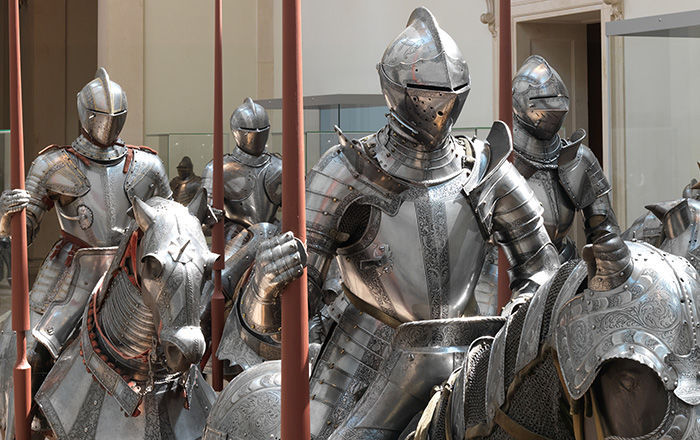Fragment of a Curb Bit
Not on view
This element is one of the side rings of a Germanic curb bit, with the remains of one of its chain reins still attached to it. The T-shaped toggle on the ring was used for hanging the bit from the bridle's cheekpiece.
The two large side rings would have been connected by a mouthpiece and a straight bar acting as a curb (passing underneath the horse’s chin and pressing it when the reins were pulled). The chains of the reins had the purpose of weighting them. Like today's western chain reins, they would prevent the vibrations of light leather reins from being misunderstood by the horses as a demand to change direction. Heavy reins also prevented them from passing over the horse's head if the rider needed both of his hands. Curb bits were actually an improvement in military technology, since they allowed riders to have a very good control of their horses with only one hand, freeing the other for holding a weapon.
This kind of bit is actually a curb system installed on a snaffle-like bit. The Germanic populations might have taken the idea from the curb bits used by the Thracian auxiliaries fighting in the Roman cavalry and adapted them on their snaffles. These bits are often found in German and Danish bogs where they were deposited as offerings. This fragment was found in the River Elbe, in Saxony.
This image cannot be enlarged, viewed at full screen, or downloaded.

